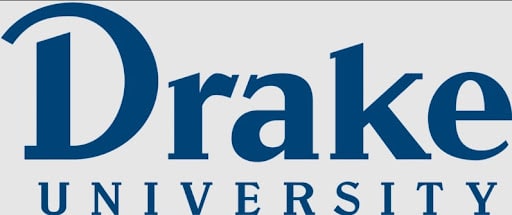Deal closed: Maverik buys Kum & Go
Kyle Krause: Kum & Go founders would have been proud of sale

Kathy A. Bolten Aug 29, 2023 | 12:18 pm
5 min read time
1,254 wordsAll Latest News, Retail and BusinessMaverik today finalized its purchase of long-time Iowa company Kum & Go, an acquisition that makes the Utah-based group the 12th-largest convenience store chain in the U.S.
The Kum & Go brand name will be kept in states in which Maverik doesn’t currently operate, Chuck Maggelet, CEO and chief adventure guide for Maverik – Adventure’s First Stop, told the Business Record. Maverik also plans on maintaining a corporate office in the Des Moines area, he said. Kum & Go’s nearly 5,000 employees will be retained by Maverik.

Neither Maggelet nor Kyle Krause, whose grandfather and father founded Kum & Go, would disclose the sale price. Earlier this year, Reuters placed Kum & Go’s value at nearly $2 billion.
Maverik, whose parent is the private holding company FJ Management Inc., was among an undisclosed number of groups that made offers to buy Kum & Go when Krause began mulling whether to sell the 64-year-old business that includes nearly 400 stores in 13 states.
Acquiring Kum & Go was attractive because of the companies’ similarities, Maggelet said. The companies’ cultures, emphasis on supporting community organizations through donations and volunteerism, and business models are all similar, he said. “It’s a great fit.”
Kum & Go stores, on average, are larger than those operated by Maverik; they are also an average of three years newer, Maggelet said.
“It’s really rare that you can find that many stores, in that great of condition, in that great of format and great layout that works with what we do and how we do it,” Maggelet said.

Another selling point was that the companies’ store locations only overlapped in five states, Maggelet said. “We had a high level of confidence that we’d be able to get it through the Federal Trade Commission approval without too many divestiture of assets.”
Maggelet will continue leading Maverik. Tanner Krause, Kum & Go’s CEO since 2021 and Kyle Krause’s son, will provide support during the integration of the two companies for a short period of time.
Kum & Go’s roots
Four generations of the Krause family have led Kum & Go, which was co-founded by William A. Krause and his father-in-law, Tony Gentle, in 1959 in Hampton, Iowa. The two men opened Hampton Oil Co., a small full-service gasoline station that sold fuel and automotive products and repaired vehicles.
In 1963, the gas station began selling milk, bread, eggs and other food products. In 1965, the company became known as Kum & Go. It opened its first store in Des Moines in 1984.
Kyle Krause said both his grandfather (Gentle) and father (William Krause) would have approved the sale of Kum & Go.
“Both [Gentle and William Krause] would have been super proud and excited,” Krause, CEO of Krause Group, which was Kum & Go’s parent company, said. “You certainly don’t have to sell a business to commemorate its success, but when you do, you sit back and say ‘Wow.’ They would have done that.”
Earlier this year, word leaked that Krause Group was considering selling Kum & Go. In April, Maverik and Krause Group announced that Maverik would acquire Kum & Go as well as Solar Transport, a tank truck carrier and logistics provider that had been owned by Krause Group.
The decision to sell Kum & Go was not easy to make, Krause said. However, the time is right to diversify Krause Group’s portfolio, reduce risks associated with the convenience store industry and provide more opportunities for Kum & Go employees.
“We need to make sure that we have a family business for future generations and that meant looking at opportunities for diversification,” Krause said. “Also, when you combine two companies, you provide more opportunities for associates’ growth.”

EVs and C-stores
An unknown facing the convenience-store industry is the electric vehicle market. In 2021, the U.S. Bureau of Labor Statistics estimated that there were about 2 million electric vehicles in the U.S., up from 170,000 a decade earlier. By 2030, the sale of electric vehicles could reach 40% of the U.S. total passenger car sales, S&P Global Mobility forecasts.
Convenience stores sell an estimated 80% of the fuel bought in the U.S., according to the National Association of Convenience Stores. As more electric vehicles are sold, there will be less need for consumers to buy gasoline. And if consumers aren’t buying gasoline, they also won’t be purchasing pizza slices, iced drinks, pop and other items from convenience stores. On average, customers spent $7.52 on items purchased inside convenience stores in 2022, according to the association.
“I don’t know how quickly the adaptation [to electric vehicles] will be,” Krause said. “But Kum & Go is certainly dependent on [selling fuel] and that means looking at how we manage the future risks, the unknown risks, within Krause Group.”
In recent years, Kum & Go has added electric vehicle charging stations at new locations. Currently, 34 Kum & Go stores have charging stations.
“One of the really cool things about Kum & Go is that they are ahead of us in EV,” Maggelet said. “We’re anxious to learn more about how they have approached it, what they are seeing, and how that can help Maverik out as well.”

What acquisition means to Maverik
Maverik had been the 21st-largest convenience store chain in the U.S., operating nearly 400 stores in 12 states, mostly in the western portion of the U.S. The company has nearly 8,000 employees.
Maverik’s acquisition of Kum & Go catapults the company to the U.S.’s 12th-largest convenience store chain, expanding its footprint eastward to Michigan. Maverik now has nearly 800 stores in 20 states and over 13,000 employees.
Kum & Go customers likely won’t notice the change in ownership, Maggelet said. “There’s nothing we have to change immediately until we are confident that we’re going to make things better.”
In early 2024, about one-third of the Kum & Go stores that were acquired will likely be rebranded to Maverik, Maggelet said. “Those stores are in territories where we feel Maverik has a more established brand.”
Much of the rebranding will occur in states where both companies have stores, although specifics have not yet been decided, he said. Maverik and Kum & Go both have stores in Colorado, Nebraska, South Dakota, Utah and Wyoming.
The remaining Kum & Go stores will remain branded as Kum & Go, Maggelet said. When Maverik opens new stores in states with strong Kum & Go name recognition, it’s not yet known whether the properties will be called Kum & Go or Maverik, he said. “We don’t have an opinion on that.”
Maverik’s headquarters, which is called Basecamp, is located in Salt Lake City. The company will also operate a Basecamp in the Des Moines area, Maggelet said. Until office space is secured, the administrative staff of Kum & Go and Solar Transport will continue operating out of the Krause Gateway Center.
Maggelet said he didn’t know how large a staff Maverik would have in Central Iowa and that some staff in Salt Lake City could relocate to the Des Moines area.
“We’ll know a lot more in the next six months to understand who and how we should be structuring ourselves to make sure, as we say at Maverik, that we’re living our purpose and building the coolest convenience experience on the planet.”
Related articles: Krause ‘optimistic’ about proposed stadium project
Kyle Krause talks about his future plans, Krause Gateway Center


Kathy A. Bolten
Kathy A. Bolten is a senior staff writer at Business Record. She covers real estate and development, workforce development, education, banking and finance, and housing.









